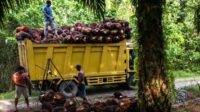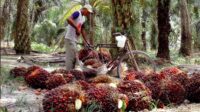PALMOILMAGAZINE, JAKARTA — The saying “the devil is in the detail” perfectly captures Indonesia’s current food policy landscape. Small policy shifts, when made without thorough consideration, can create ripple effects with serious consequences. The National Food Agency (Bapanas) recently eliminated the rafaksi or price deduction system for unhusked rice (gabah) at the farmer level through Regulation No. 14/2025, and its impact is beginning to show.
This new rule replaces Bapanas Regulation No. 2/2025, which previously categorized rice prices based on moisture levels and quality. Interestingly, the gap between the two regulations was only nine days — an unusually short time for a strategic policy affecting millions of farmers and the nation’s food security.
Rice, being the staple food of most Indonesians, is too critical for rushed policymaking. The abrupt shift raises concerns that the government’s food policy framework still lacks long-term planning and sustainability.
A Double-Edged Sword for Farmers
The removal of the rafaksi system was intended to increase farmers’ income by ensuring higher selling prices for their rice. However, it has also created a new dilemma. With varying grain quality, traders and rice millers now face greater difficulties in processing.
High-moisture rice requires additional drying, which increases production costs. This is where the “double-edged sword” effect becomes clear — a policy meant to benefit farmers may instead strain the next stages of the rice value chain.
A Surplus That Signals Trouble
According to Statistics Indonesia (BPS), by June 2025, Indonesia recorded a rice surplus of around 3.3 million tons, with production reaching 18.75 million tons and consumption at 15.43 million tons. At first glance, this looks like a success story for national food self-sufficiency.
Yet behind the numbers lies a warning. The law of supply and demand remains firm — when supply outpaces demand, prices fall. Farmers, often the weakest link in the chain, bear the brunt.
This scenario isn’t new. In 2018, during a major harvest season, rice prices plummeted by up to 20 percent, leaving farmers in financial distress. History, it seems, is repeating itself.
Market Anomalies and the Domino Effect of Price Controls
Ironically, despite the surplus, rice prices continue to climb. Rising production costs and a minimum procurement price (HPP) of Rp6,500 per kilogram have pushed many small rice millers out of business — only large-scale players can survive.
Data from Bapanas Price Panel show that in July 2025, the average price of medium rice reached Rp12,990/kg, and premium rice Rp14,218/kg. Though still below the government’s price ceiling (HET), these figures suggest market distortion.
Such distortions generate deadweight loss (DWL) — inefficiencies that benefit neither producers nor consumers. When prices are capped, producers hold back stock while demand stays high. The result is a perceived shortage, prompting prices to climb toward — or even beyond — the official ceiling.
Limited Export Competitiveness and Bulog’s Constraints
In theory, surplus rice should lead to more exports. But Indonesian rice remains uncompetitive globally — quality issues such as high moisture, impurities, and broken grains persist, while prices are 30–50% higher than Thai or Vietnamese rice.
The government’s protective stance on exports further complicates matters. Prioritizing domestic supply over international trade has eroded market confidence, making it harder for exporters to secure long-term contracts.
Meanwhile, Bulog, the state logistics agency, also faces limitations. Of its 3.8 million-ton storage capacity, around 2 million tons are already occupied, leaving 1.8 million tons of available space — insufficient to absorb all the farmers’ surplus. Moreover, reports suggest that much of this year’s procurement has been of lower quality.
Rethinking Indonesia’s Rice Strategy
Despite its challenges, Bulog still plays a vital role in maintaining national rice stability. To stay effective, the agency must expand storage capacity, improve stock management, and strengthen coordination across ministries for market operations and social aid distribution.
On a broader level, the government needs to reconsider its export restrictions. As long as policies remain reactive and patchwork, Indonesia’s food system will continue to be vulnerable to price shocks and supply chain imbalances.
A small policy adjustment may seem trivial — but as the saying goes, the devil is in the detail. When details are overlooked, even well-intentioned reforms can backfire — and, as always, smallholder farmers are the first to feel the consequences. (*)
Author: Rama Kurniawan, Graduate Student in Agricultural Economics, IPB University
Disclaimer: The opinions expressed in this article are those of the author and do not necessarily reflect the views of beige-heron-208544.hostingersite.com.




































